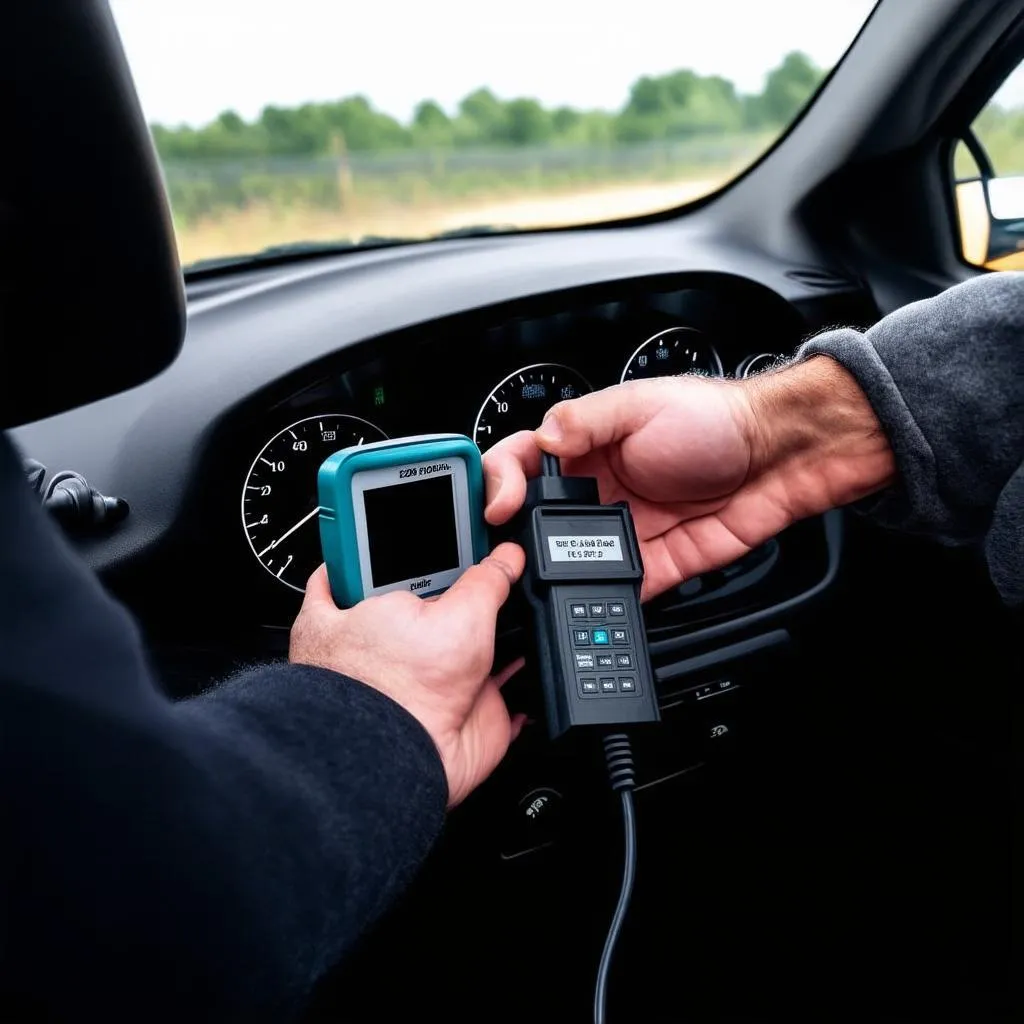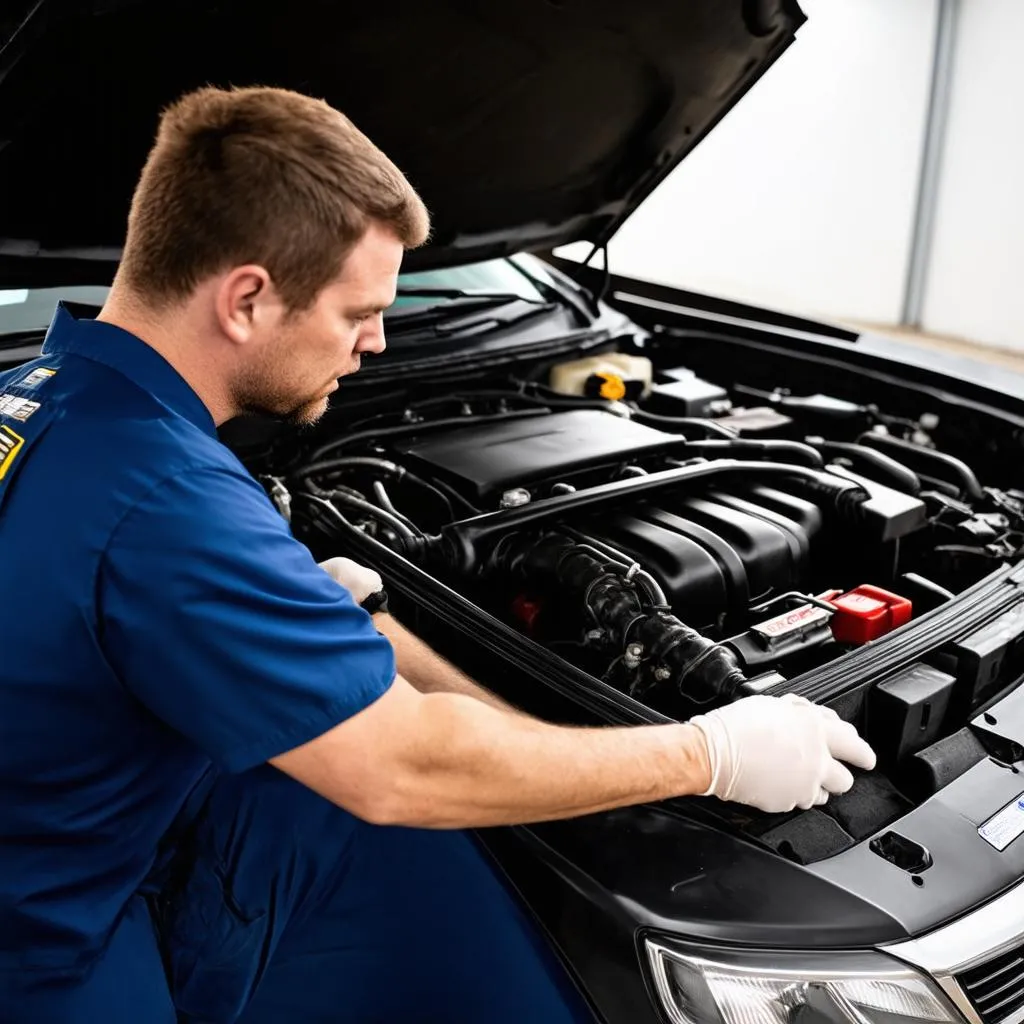Ever felt that sinking feeling when your car fails inspection? It’s like your car just got a big, fat “F” and now you’re stuck. This is especially true with emissions tests, where something as cryptic as a “Failed Inspection Drive Cycle Obd” can leave you scratching your head.
But don’t worry, we’re here to decode that for you. Think of us as your car whisperers, ready to translate those blinking dashboard lights into plain English.
Understanding the Beast: What is a “Failed Inspection Drive Cycle Obd”?
Before we banish the jargon, let’s break down what we’re dealing with.
- OBD: This stands for On-Board Diagnostics. It’s your car’s internal computer system that monitors emissions, engine performance, and other crucial functions. Think of it as your car’s very own black box.
- Drive Cycle: This isn’t about cruising down a scenic route. It’s a specific set of driving conditions your car needs to experience for the OBD system to properly assess its emissions components.
- Failed Inspection: Well, this one’s pretty self-explanatory. It means your car’s OBD system didn’t like what it saw during the drive cycle and flashed a warning.
Putting it all together, “failed inspection drive cycle OBD” simply means your car’s emissions control system didn’t pass muster during the standardized test.
Why Your Car Might Be Feeling Test-Shy
There are a few common culprits behind a failed OBD drive cycle inspection:
- Loose Gas Cap: Believe it or not, this seemingly minor issue can trigger the dreaded “Check Engine” light. A loose gas cap can allow fuel vapors to escape, messing with your car’s emissions.
- Faulty Oxygen Sensor: This little sensor measures the oxygen levels in your exhaust to ensure optimal engine performance and minimize harmful emissions. A malfunctioning sensor can throw a wrench in the whole system.
- Catalytic Converter Issues: The catalytic converter is like a mini-chemical plant in your exhaust system, converting harmful pollutants into less harmful substances. If it’s not working correctly, your emissions will suffer.
- EVAP System Problems: The EVAP system (that’s Evaporative Emission Control System) prevents gasoline vapors from escaping into the atmosphere. A leak or malfunction in this system can lead to a failed inspection.
Taming the Tech: What to Do After a Failed Drive Cycle
First things first, don’t panic. A failed inspection doesn’t mean your car is destined for the scrap heap. Here are a few steps to take:
- Check the Simple Stuff: Before you run to a mechanic, start with the easy things. Make sure your gas cap is on tight. It’s a surprisingly common culprit!
- Read the Code: Most cars will store a specific code in the OBD system that indicates the source of the problem. You can purchase an inexpensive OBD-II scanner online or at an auto parts store to read the code yourself, or take it to a mechanic to have it checked.
- Address the Issue: Once you know the culprit, you can address the problem head-on. This might involve tightening your gas cap (easy!), replacing a faulty sensor, or tackling a more complex issue with the EVAP system or catalytic converter.
- Retry the Drive Cycle: After resolving the issue, you’ll need to complete a successful OBD drive cycle before heading back for another inspection. You can find specific drive cycle procedures for your car model online, but they generally involve a mix of city and highway driving, idling, and acceleration.
 OBD Scanner
OBD Scanner
The Drive Cycle Dilemma: Why Can’t I Just Drive Like I Normally Do?
You might be wondering why there’s a special drive cycle for emissions testing. Can’t they just check your emissions while you’re driving around town?
The answer lies in the complexity of your car’s emissions control system. The OBD system needs to monitor a variety of sensors and components under different operating conditions to ensure everything is working correctly. The drive cycle is designed to mimic these conditions and give the OBD system enough data to make an accurate assessment.
Think of it like a doctor running a series of tests to diagnose an illness. They wouldn’t just ask you how you’re feeling; they’d run blood work, take your temperature, and check your vital signs to get a complete picture of your health. The OBD drive cycle is like those tests for your car’s emissions system.
Beyond the Mechanics: A Touch of Feng Shui for Your Ride
While we’re all about the nuts and bolts of car repair, there’s something to be said for keeping the energy around your car positive. In Feng Shui, the car is often seen as an extension of the home. Just like a cluttered home can create stagnant energy, a messy or neglected car can do the same.
Here are a few Feng Shui tips to keep your car’s energy flowing smoothly:
- Keep it Clean: A clean car is a happy car. Regularly cleaning the interior and exterior of your vehicle can help to remove negative energy and promote a sense of clarity and peace.
- De-Clutter: Just like in your home, clutter in your car can create a sense of chaos and disorganization. Take some time to remove any unnecessary items from your car, like old receipts, empty water bottles, and that gym bag you’ve been meaning to bring inside.
- Air it Out: Fresh air is essential for good Feng Shui. Open your car windows regularly to circulate the air and release any stagnant energy. You can also use a natural air freshener, like a cedarwood sachet, to create a calming and pleasant aroma.
Cruising Towards a Successful Inspection
Passing your emissions inspection doesn’t have to be a stressful experience. By understanding how the OBD drive cycle works and addressing any underlying issues, you can help ensure your car is running clean and ready to hit the road.
Need help diagnosing a failed inspection drive cycle OBD issue? Our team of expert auto repair technicians is here to help! Contact us via WhatsApp at +84767531508 for 24/7 support.
 Car Mechanic
Car Mechanic
Still have questions about OBD drive cycles? Check out these related articles on our website:
Drive safe and happy motoring!